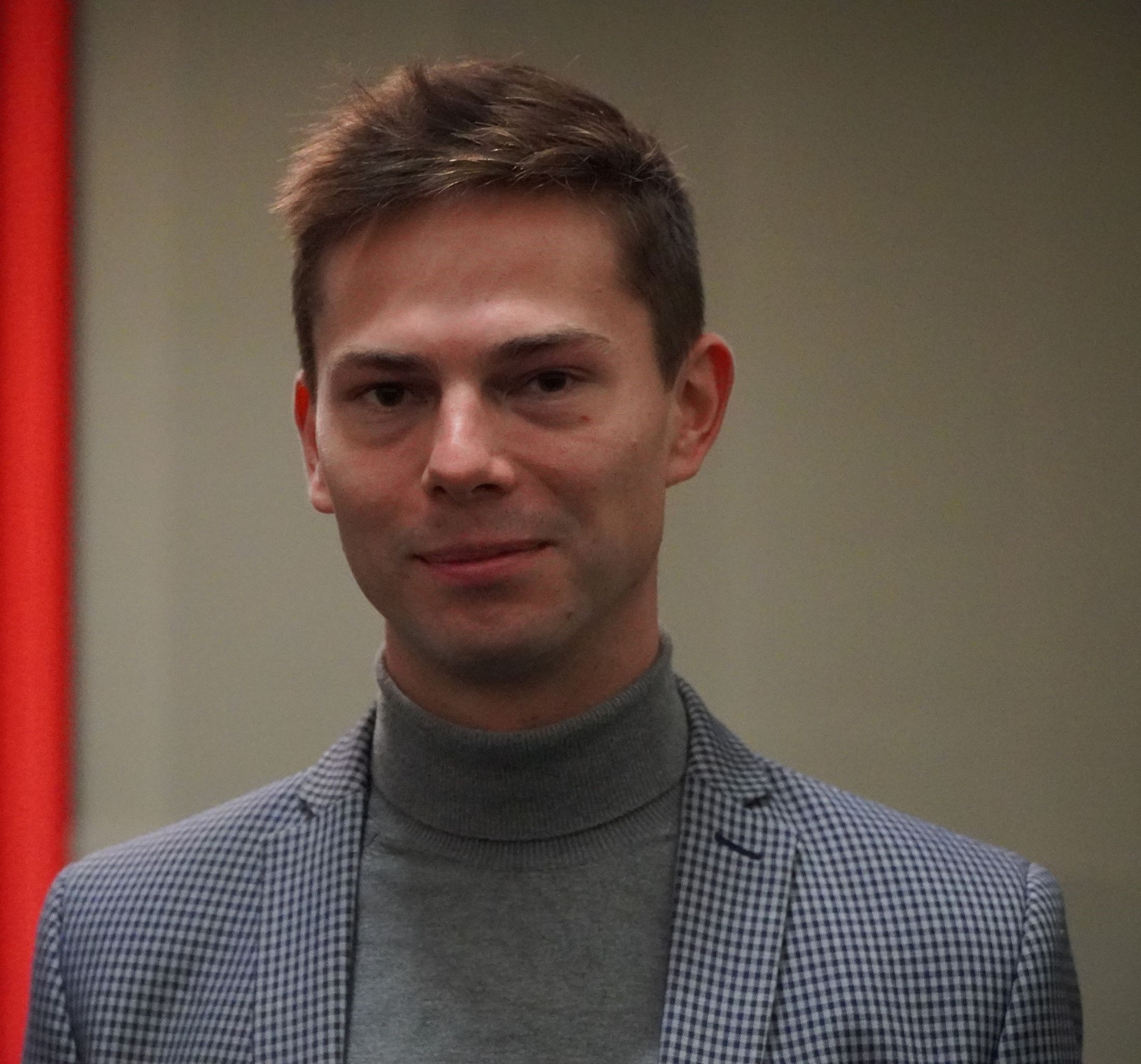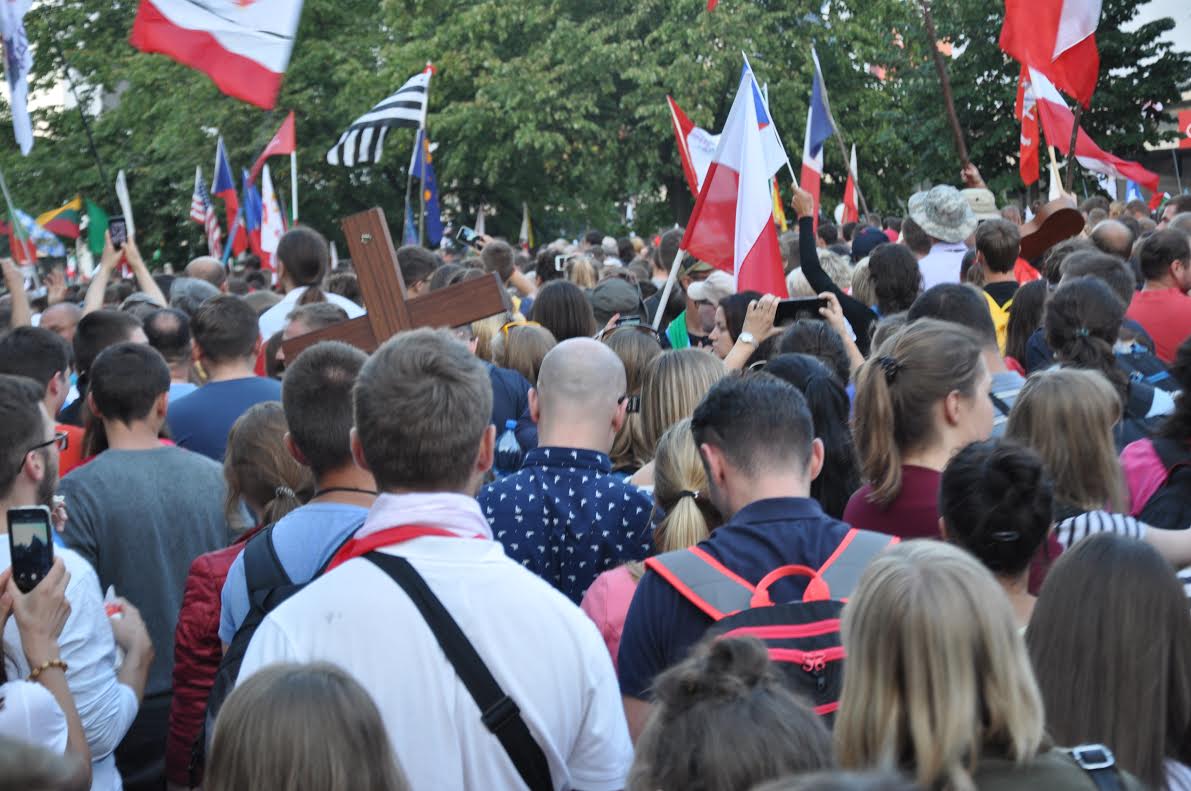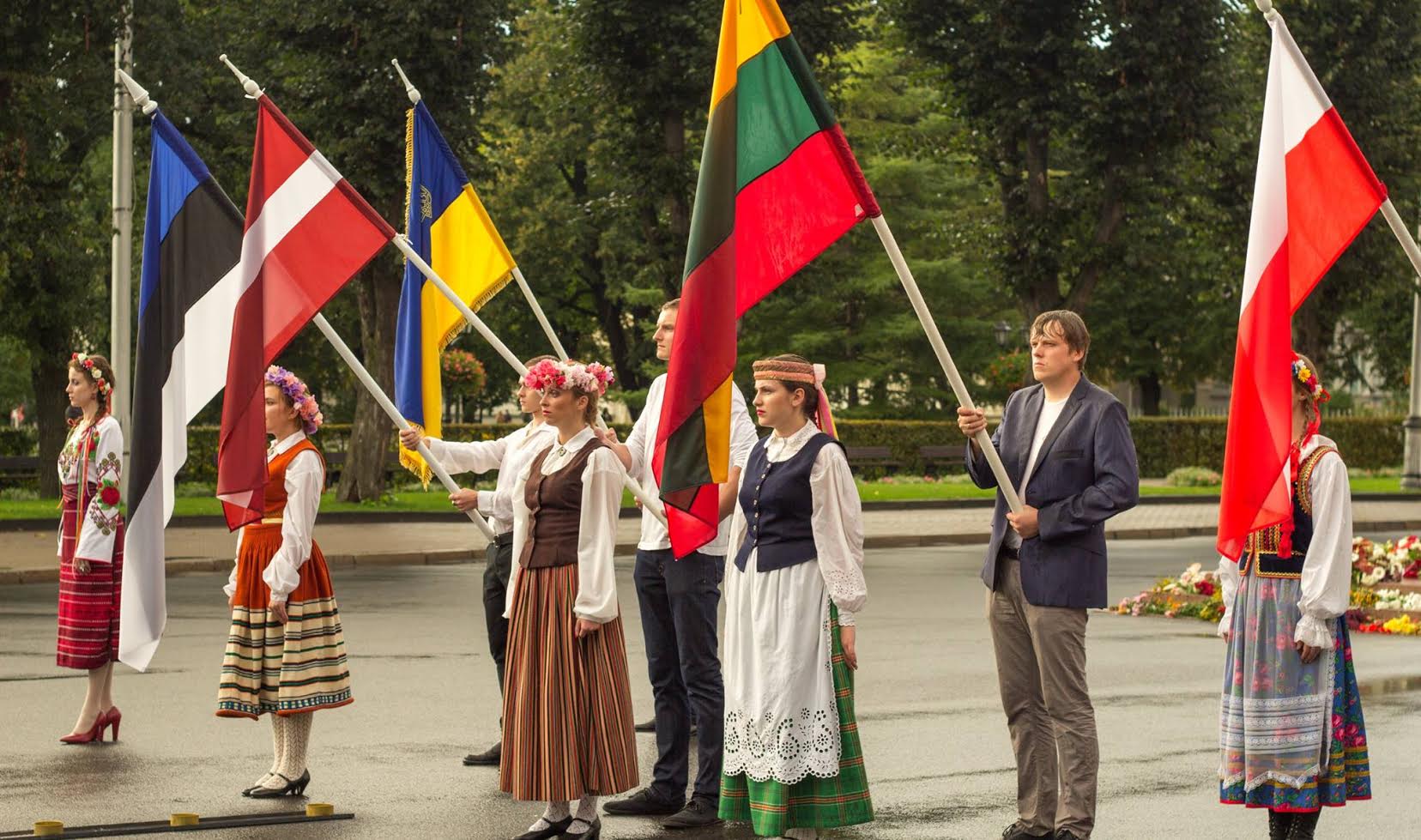Grzegorz Kucharczyk is a Polish historian and Humanities professor who specialises in 19th- and 20th-century political thinking as well as German history. One of his latest offerings is a book entitled Christophobia: 500 Years of Hate towards Jesus and the Church (Chrystofobia: 500 lat nienawiści do Jezusa i Kościoła). Sébastien Meuwissen interviewed him by phone on November 2.
Sébastien Meuwissen: Why did you choose this title for your book? Why did you not use the term “Christianophobia”, for example?
Grzegorz Kucharczyk: Because Christianophobia is a manifestation of a deeper process which is called Christophobia. It can be observed as manifestations of hostility towards Christians or Christianity, which we call Christianophobia. It is in fact really about hostility towards the very founder of the Church and its head, i.e. Jesus Christ, and this is the reality that we saw last year on the streets of our cities, for example. The “red lightning” protests [pro-abortion protests in Poland in the autumn of 2020] were full of hostility towards Jesus Christ. Blasphemous slogans were written on the facades of churches, and masses were even interrupted. It was really about expressing a particular hatred towards Jesus, and it has been so through the ages. What we call the persecution of Christians and the Church is only the aftermath of the original persecution, or hatred of Jesus.
Sébastien Meuwissen: The book we are talking about was published before these events. Were you surprised that such things were taking place in the Catholic Poland of Saint John Paul II, or did you have a feeling that it was coming?
Grzegorz Kucharczyk: It didn’t surprise me, but it is very concerning.
History has shown more than once that countries which were considered “traditionally Catholic” then saw accelerated Christophobic revolutions.
It is enough to mention, for example, Portugal in the early twentieth century, France in the eighteenth, or Mexico in the first half of the twentieth. Historical reality confirms that nothing can be taken for granted once and for all.
These demonstrations last autumn revealed certain currents that had been building since much earlier, and they exploded all at once. It may be painful for many people, but they will have to recognise that the situation is not so rosy as it may seem. We can no longer be reassured that this does not concern us and that Christophobic manifestations only happen in the West, not in our country. It turns out that this may have been the last call for many people to acknowledge that the situation is serious.
Sébastien Meuwissen: You begin your book with the Protestant Reformation. What was this Reformation all about? You draw the reader’s attention to the fact that many places of worship were not only vandalised, but also subjected to all kinds of blasphemous acts and profanations. How did the societies of those countries that were affected by this revolution react?
Grzegorz Kucharczyk: Contrary to what the propaganda says in circles which view the Reformation solely as historical progress, the Reformation did not come from below. It was not that people demanded a pure Gospel and the abolition of the Holy Mass, Latin, the worship of saints, the destruction of sacred art, and so on. The « common people » never asked for anything like that.
From the beginning, the Protestant Reformation was a revolutionary project that was born in the hearts and minds of some of the Catholic Church’s clergymen. Martin Luther was a priest before he became a “reformer”. It was all about a comprehensive revolutionary program. This revolution was the rejection of the Church as such.
It was not about the promiscuity of one pope or another, because it was commonly said in the Church that the situation in the Roman curia was scandalous.
It was all about the rejection of the Church as an institution that is called and created by God Himself with the mission of leading people to salvation. This was rejected by Martin Luther and others, with all the consequences that followed.
One of them was the cultural vandalism you mentioned: destroying monuments of sacred art or acts of desecrating the Blessed Sacrament. This was especially the case in the regions where the Calvinist faction was gaining strength. There, the destructive activity was particularly violent, such as in the Netherlands, Germany, and England. People protested against it. A whole series of peasant uprisings in England and Sweden showed that the people did not want such revolutionary changes.
The decisive factor here was the support of the state – that is, the individual rulers who were primarily materially interested in taking over the Church’s property. The slogan of the “poor Church” is usually based on the fact that specific people, i.e. the ruler and certain magnates or nobility, get rich from it. In this way, a community of interests was created which, possessing the instruments of power, turned out to be stronger than the popular uprisings that were against the Reformation.
Sébastien Meuwissen: The crucial role of Freemasonry in what you like to call the Anti-French Revolution is a commonly known fact. You have mentioned many times during your lectures that the right question is not to ask who belonged to a lodge in France at the end of the eighteenth century, but rather who did not belong to one. Are the Masons therefore responsible for the fact that the French Revolution was characterised by the desire to parody the Catholic religion and its sacraments?
Grzegorz Kucharczyk: Various eighteenth-century organisations such as the Freemasons, but also the Rosicrucians and the Illuminati, rejected the Catholic faith and the institutional Church itself.
They produced a sort of paraliturgy: i.e., their own cults and rites. Let us pay attention to the whole ritual by which new members are admitted to Freemasonry: all the garments, aprons, compasses, etc. It is all “liturgy” which bears some specific signs that it is parodying the Christian cult.
At the time of the Revolution’s victories, this tendency passed to a wider ground in the form of the so-called revolutionary holidays, which on the one hand were to be the expression of this new power and on the other were intended primarily to “educate” the so-called ordinary French about the new order. Take, for example, the planting of small “trees of freedom”, the cutting down of which was punishable by the death penalty.
One can also mention the rejection of the Christian calendar by inter alia disposing of Sunday and the creation of a week of ten days. It was all aimed at a peculiar revolutionary pedagogy which in turn led to what the Israeli philosopher Jacob Talmon calls totalitarian democracy. Totalitarianism is based on state power’s ambition to penetrate all spheres of human life, such as, for example, measuring time. Here, the French Revolution was a prototype, as was the case of the genocide in Vendée. It was the first genocide in the modern history of Europe in which a popular uprising was drowned in blood by the armies of the Republic.
Researchers of the French Revolution have long stated that the vast majority of the Republican terror’s victims were representatives of the so-called Third Estate; that is, the layer of the unprivileged who were allegedly to be the Revolution’s main beneficiaries.
Sébastien Meuwissen: According to all the information provided by your book, it seems that wherever the Christophobic forces take power, atrocities often take place in the form of bestial murders, for example. You mention that it was during the French Revolution that the idea of using gas for “more effective” mass killing was raised for the first time.
Grzegorz Kucharczyk: One must follow the research and findings of an eminent French historian who studied the history of the Vendée uprising as a fratricidal French genocide. I am talking about Reynald Secher, who wrote an excellent and well-documented sourcebook on this genocide. How could they kill the largest number of people in the shortest time? This topic was debated in the French parliament. Secher reminds us of these debates. At some point, the parliamentarians raised the idea that “maybe we could use gas”.
There were no repercussions for the genocide in Vendée, and it was even regarded as a victory for the Republic. This encouraged more genocides. History shows it clearly. For example, Young Turk officers who were in Western Europe at the beginning of the twentieth century read about the history of the French Revolution, especially in relation to Vendée. These officers took power as the Young Turkish party in their country. During the First World War, they organised the first genocide of the twentieth century: the extermination of the Armenians and other Christians in Turkey. In turn, while encouraging his generals to wage a total war against Poland before the aggression at the end of August 1939, Hitler asked rhetorically, “Who remembers the massacre of the Armenians today?” Unpunished genocide encourages more genocides. Secher calls the erasing of the memory of such events “memoricide” – that is, memory killing.
Another thing is the phenomenon that some call “genocidum atrox”, which means not only a genocide but a genocide committed with particular cruelty. This was especially true during the Spanish Revolution of 1936-1939. For example, in areas under Republican rule the graves of nuns and monks were desecrated en masse, with their bodies being disinterred and placed in front of churches. People were posing for pictures with the corpses. It was something to brag about.
So here we are dealing with a combination of cruelty and contempt. This is a pattern described by Blessed Cardinal Wyszyński, who explained that if someone fights against God, he will certainly raise his hand against the freedom of God’s children as well; that is, people who believe in God. The successive waves of Christophobia confirm this pattern.
Sébastien Meuwissen: In Belgium, where I come from, and in Western Europe more broadly, I have noticed a tendency to identify German National Socialism with the far right, which is in a sense related to the Catholic Church, or at least with Christianity as it is broadly understood. However, you emphasise that the Germans killed many Catholic priests starting from 1939.
Grzegorz Kucharczyk: Anyone who claims that German National Socialism was far right and connected to the Church should remember what I write about in my book; specifically, about the extermination of the Catholic clergy in Polish lands that were occupied by the Germans from 1939.
The Germans murdered one-third of the Catholic clergy who lived in those Polish regions that were incorporated into the German Reich: i.e. Pomerania, Greater Poland, and Upper Silesia.
German Nazis also fought against the display of crosses and other Christian symbols in public spaces. Arthur Greiser, a German governor, had crosses and roadside shrines taken down throughout the region of Greater Poland. He ordered the destruction of the great statue of the Sacred Heart of Jesus in Poznań in the fall of 1939. It was one of the Germans’ first decisions in Poznań. We had to deal with neo-pagan governments, as Cardinal Wyszyński rightly called them.
Sébastien Meuwissen: Miklós Horthy has a fairly good reputation in European right-wing circles. However, you point out that he bears some responsibility for the events of the 1930s that led to the Second World War.
Grzegorz Kucharczyk: Hungary was formally a monarchy all along. Horthy was regent. The criticism of Horthy is that he did not hand power over to the Hungarian King, Charles IV of Habsburg, who twice came to claim his throne in 1921. Charles IV was the blessed King of Hungary and the Austrian Emperor. He was elevated to the altars as the last beatification of John Paul II’s pontificate. But Horthy did not give up power, leading to all the consequences that unfolded. There was a Habsburg king in Hungary.
That is why many historians say – and this is a legitimate thesis in my opinion – that perhaps there would have been a real chance for the Habsburgs to return to Vienna. If the Habsburgs had been ruling in Vienna or Budapest, it could be said that the possibility that Nazism could have infiltrated this region of Europe, such as through Austria’s Anschluss, would have been very limited. It was no coincidence that Hitler personally hated the Habsburgs, especially Emperor Charles I, King Charles IV of Hungary.
Sébastien Meuwissen: The so-called generation of 1968, who hold a majority in the European Parliament, are considered by you as the heirs of this ideology of relativism, as they consider this relativism to be a dogma. Can they really be called “dogmatists”?
Grzegorz Kucharczyk: I will quote the words of Cardinal Gerhard Müller, who said that no one is more dogmatic than a relativist when relativism is questioned. This is the pattern we see over and over again. In the times of the French Revolution, the slogan was that “there is no freedom for the enemies of freedom.” Today we hear that “there is no tolerance for the enemies of tolerance.” Strangely enough, the defenders of freedom of speech remained silent when President Trump was banned from social media. All those who talk so much about freedom, tolerance, and freedom of opinion somehow failed to react.
Statutory law governed by relativists took power over natural law. Nowadays, we are going a step further. Today, it is not only natural law and nature itself that are being questioned. Look at the redefinition of such things as marriage, family, gender… The old truth is confirmed that a crisis of faith inevitably entails a crisis of reason. Until recently, it would have seemed absurd to replace the categories of “father’s name” and “mother’s name” on questionnaires with “parent A” and “parent B, or to eliminate men’s and women’s toilets in favour of other strange terms.
A crisis of faith always entails a crisis of reason, because this sphere of spirituality knows no vacuum. We can see the consequences of this before our eyes.
Sébastien Meuwissen: Do you share the opinion of Tristan Azbej, Hungary’s State Secretary for the Aid of Persecuted Christians and for the Hungary Helps Program, who claims that Christianity is the most persecuted religion in the world today?
Grzegorz Kucharczyk: Yes. These are words that reflect the state of affairs, because all the institutions and agencies that monitor persecution throughout the world have been saying for years that Christians are the most persecuted religious group globally. This is just a statement of fact.
Sébastien Meuwissen: You write a lot about martyrs in your book. You present them as a symbol of hope.
Grzegorz Kucharczyk: As Saint John Paul II said, the martyrs resemble the truth that the modern world rejects. In other words, there is some truth that is non-negotiable and irrefutable. It is worth giving up everything for it, including life. This is the lesson of the martyrs. John Paul II called it “the ecumenism of martyrs.” Throughout the twentieth century, we saw that Christians of various denominations fall victim to totalitarian regimes because they remained faithful to Christ.
The situation is similar today. Various denominations are under attack in Islamic countries. This is also the case in Communist countries such as North Korea, China, and Cuba. It is also a reality which shows that the terrible baptism of blood that the martyrs are going through is – as the Fathers of the Church said – the seed of this Church and its growth. In this sense, martyrs are a sign of hope.




